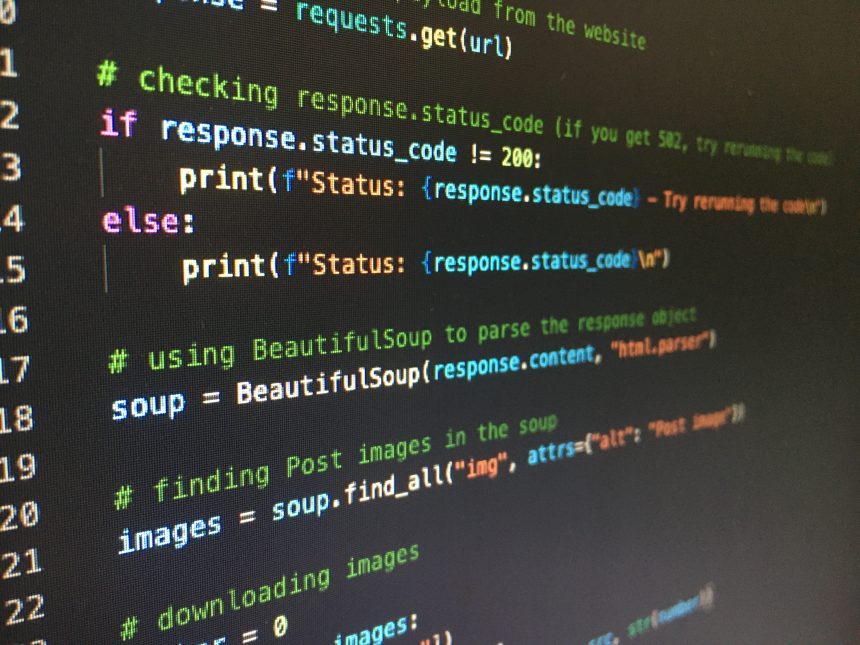Python is a highly-popular programming language. One of its strengths lies in its ability to handle and manipulate data with ease. Data collections, in particular, are an essential aspect of storing and organizing data in Python. In this article, we will discuss the different types of data collections available in Python, how to create and modify them, as well as how to access their elements using list, tuple, and set methods and functions.
Understanding Data Collections in Python
Data collections refer to a group of values or objects stored in a single variable. In Python, there are three primary data collection types: lists, tuples, and sets. These data types are similar in many respects, but they differ in how they store and handle data. Understanding these differences is crucial to efficiently utilizing each data collection type.
What are Data Collections?
Simply put, data collections are variables that store multiple values or objects of different types. These variables are particularly useful when working with large amounts of data, as they allow for easy and efficient manipulation of that data.
For example, imagine you are working on a project that requires you to store and manipulate a large amount of customer data. Rather than creating separate variables for each piece of data (e.g., name, address, phone number), you can use a data collection to store all of this information in a single variable. This makes it much easier to access and manipulate the data as needed.
Types of Data Collections in Python
The three primary data collection types in Python are lists, tuples, and sets. They are differentiated by how they store and order data.
Lists are ordered collections of values. This means that the values are stored in a specific order, and that order can be changed as needed. Lists are mutable, which means that you can add, remove, or modify values within the list. Additionally, you can easily replace elements in a Python list using indexing and assignment.
Tuples are similar to lists in many respects, but they are ordered and immutable collections of values. This means that the values in a tuple are stored in a specific order, but that order cannot be changed. Additionally, once a tuple is created, its values cannot be modified.
Sets are unordered collections of unique values. This means that the values in a set are not stored in any particular order, and that each value in the set is unique. Sets are mutable, which means that you can add or remove values from the set as needed.
Each of these data collection types has its own strengths and weaknesses, and the choice of which to use will depend on the specific needs of your project. However, by understanding the differences between these types, you can make informed decisions about which type to use in any given situation.
Lists in Python
Lists are the most common and versatile type of data collection in Python. They are used to store both homogeneous and heterogeneous data elements, and their elements are ordered. Creating lists in Python is straightforward, you can create a list by enclosing values within square brackets ([]).
Creating and Modifying Lists
Lists can be created in several ways. Here’s an example:
- Create an empty list: my_list =[]
- Create a list with values: my_list = [1, 2, 3, 4, 5]
- Create a list using the list() constructor: my_list = list((“apple”, “banana”, “cherry”))
You can modify existing lists in several ways, including adding or removing elements from the list, sorting, or reversing the list. The append(), insert(), and extend() methods are the most common ways to add elements to a list. The pop(), remove(), and del keywords are used to remove elements from a list.
Accessing List Elements
Accessing list elements is simple, you can use the indexing operator[i] to access a specific element of a list. Indexing in python starts from 0. For example, my_list[0] will return the first element of a list, my_list[-1] will return the last element of a list, and my_list[0:3] will return the first three elements of a list.
List Methods and Functions
Lists also have many built-in methods and functions to work with them. These include the sort() method to sort the list, the reverse() method to reverse the list, the count() method to count the occurrence of an element in the list, and many more.
Tuples in Python
Tuples are immutable, ordered collections of values that can contain both homogeneous and heterogeneous data elements. They differ from lists in that they cannot be modified once created.
Creating and Modifying Tuples
To create a tuple in Python, you can enclose values within parentheses (). Here are some examples:
- Create an empty tuple: my_tuple =()
- Create a tuple with values: my_tuple = (1,2,3,4,5)
- Create a tuple using the tuple() constructor: my_tuple = tuple((“apple”, “banana”, “cherry”))
Since tuples are immutable, once created, their values can’t be modified.
Accessing Tuple Elements
Accessing tuple elements is similar to accessing list elements, you can use the indexing operator[] to get a specific element of a tuple. Also, using slicing (my_tuple[start:stop]) to access multiple elements is possible in tuples.
Tuple Methods and Functions
Tuples have several built-in functions, which include count() – which counts the number of times an element appears in a tuple, and index() – which returns the index of the first occurrence of an element in a tuple.
Sets in Python
Sets are unordered collections of unique values. They are particularly useful when you need to eliminate duplicates from a sequence or perform set operations such as intersection, union, and difference.
Creating and Modifying Sets
You can create sets in Python by enclosing values within curly braces {} or using the set() constructor. For example:
- Create an empty set: my_set = set()
- Create a set with values: my_set = {1,2,3,4,5}
- Create a set using the set() constructor: my_set = set((“apple”, “banana”, “cherry”))
You can modify a set by adding or removing its elements. The add() method is used to add an element to a set, while the remove() method removes an element from the set.
Accessing Set Elements
Since sets are unordered, you can’t access their elements using indexing or slicing. However, you can loop through the set using a for loop or use the in keyword to test if an element exists in the set.
Set Methods and Functions
Sets have many built-in methods and functions to perform set operations like union(), intersection(), difference(), which combines, finds the common or different elements between two sets. You can also use add(), remove(), and clear() – to add, remove, and empty the set, respectively.
Conclusion
Understanding the different types of data collections available and how they can be utilized in Python is crucial to efficiently handling and manipulating data. Lists, tuples, and sets are the primary data collections in Python, and they all have their strengths and weaknesses. By properly implementing these data collection types, you can quickly and efficiently organize, access, and modify data in Python.















